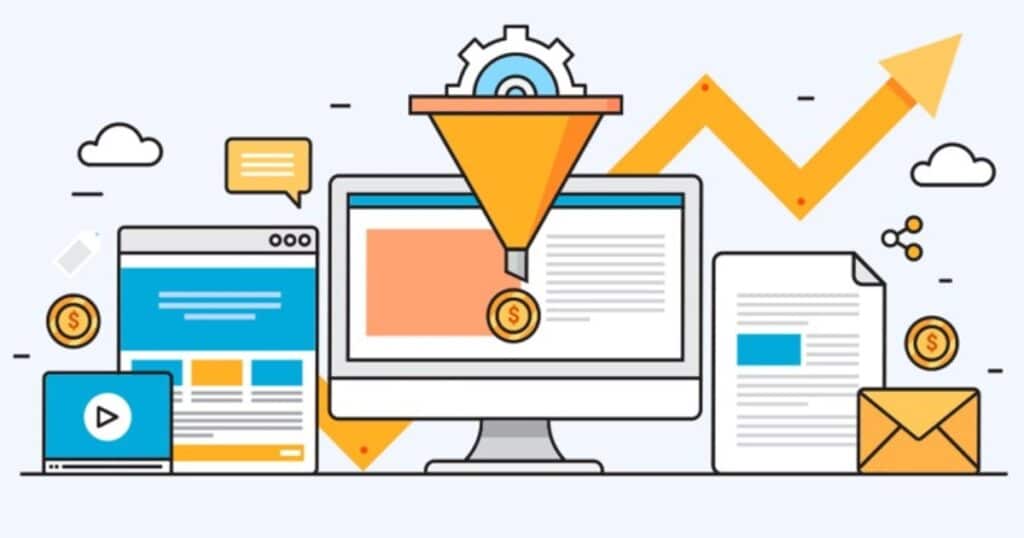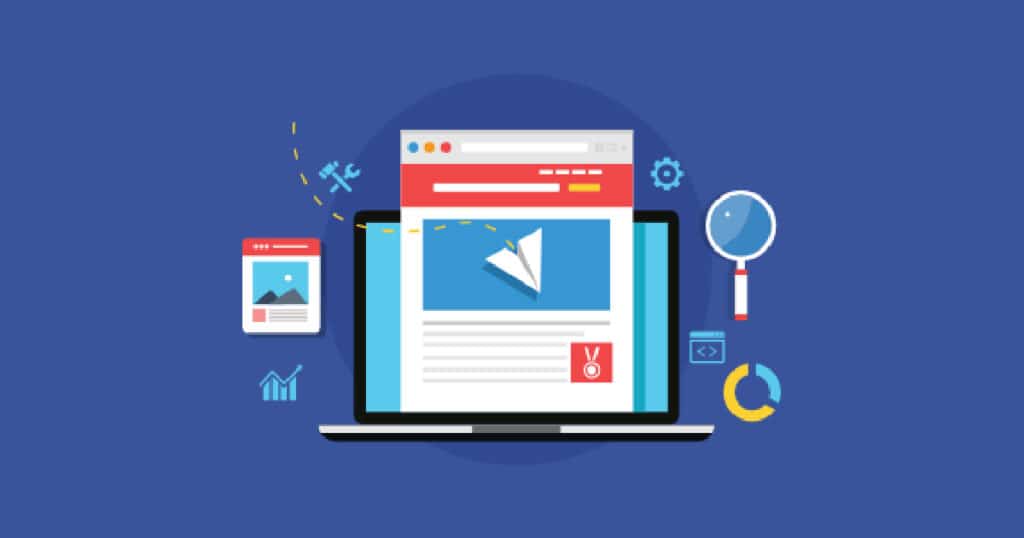Conversion rate optimization (CRO) has become an essential aspect of success. Your conversion rate is a measure of how effectively you are able to turn website visitors into paying customers or subscribers. It directly impacts your bottom line and determines the success of your online endeavors.
With the evolving digital landscape and changing consumer behaviors, it’s crucial to stay up-to-date with the most effective strategies to boost your conversion rate in 2023. By implementing the right tactics, you can drive more conversions, increase revenue, and maximize the return on your marketing efforts.
In this article, we will delve into understanding conversion rate optimization and explore some proven strategies that will help you master conversion and elevate your business to new heights. These strategies are backed by industry research and have been successfully implemented by leading businesses across various sectors. By understanding and implementing these techniques, you will be able to optimize your conversion rate and achieve sustainable growth in the year ahead. So let’s dive in and discover how you can unlock the true potential of your online business.
Understanding Conversion Rate Optimization

Conversion Rate Optimization (CRO) is a strategic process aimed at maximizing the percentage of website visitors who take desired actions, such as making a purchase, filling out a form, or subscribing to a newsletter. By optimizing the conversion rate, businesses can achieve better results from their existing website traffic, leading to increased sales and revenue.
Defining Conversion Rate Optimization (CRO)
At its core, CRO involves analyzing and optimizing various elements of a website to enhance its ability to convert visitors into customers. It goes beyond simply driving traffic to a website; it focuses on improving the user experience and persuasiveness of the website to encourage desired actions.
Setting Clear Conversion Goals
Setting clear conversion goals is crucial for effective CRO. Without clearly defined goals, it becomes challenging to measure success and determine the effectiveness of optimization efforts. Here are some key considerations when setting conversion goals:
– Identify Key Performance Indicators (KPIs): Determine the specific actions you want visitors to take on your website, such as completing a purchase, subscribing to a service, or downloading a resource.
– Establish Measurable Metrics: Define metrics that align with your conversion goals, such as conversion rate, average order value, or lead generation rate. These metrics will serve as benchmarks for measuring and tracking progress.
Conducting Data Analysis and User Research
To implement effective CRO strategies, it’s essential to gather and analyze relevant data. This includes:
– Website Analytics: Utilize tools like Google Analytics to gain insights into visitor behavior, traffic sources, and conversion funnels. Analyze data to identify pages with high bounce rates or low conversion rates.
– Heatmap Analysis: Heatmaps provide visual representations of how visitors interact with your website. They reveal where visitors click, scroll, or lose interest, allowing you to identify areas of high engagement or potential bottlenecks.
– User Recordings: By recording user sessions, you can gain a deeper understanding of how visitors navigate your website, where they encounter difficulties, and what elements attract their attention.
Conducting Website Optimization Audits
Regular website optimization audits help uncover areas for improvement and identify conversion roadblocks. Consider the following steps:
– Usability and Navigation: Evaluate the website’s usability and navigation structure to ensure a smooth user experience. Optimize menus, search functionality, and the overall layout for ease of use.
– Mobile Responsiveness: With the increasing use of mobile devices, ensure your website is fully responsive and provides a seamless experience across different screen sizes.
– Page Load Speed: Optimize page load speed to minimize bounce rates. Compress images, leverage caching, and eliminate unnecessary scripts that may slow down the website.
Identifying Conversion Roadblocks
Through data analysis and user research, you can uncover conversion roadblocks and areas for improvement. Consider the following methods:
– Conversion Funnels: Analyze the flow of visitors through your conversion funnels. Identify stages where visitors drop off and implement strategies to optimize those stages.
– A/B Testing: Conduct A/B tests to compare different variations of your website elements, such as headlines, call-to-action buttons, or page layouts. This data-driven approach helps identify what resonates best with your audience.
– User Feedback: Actively seek feedback from website visitors through surveys, user testing sessions, or customer support interactions. This can provide valuable insights into pain points and areas that need improvement.
Key Metrics Used to Measure Conversion Rate
To measure the effectiveness of your conversion rate optimization efforts, several key metrics are commonly used:
– Conversion Rate: This is the primary metric that measures the percentage of visitors who complete a desired action. It is calculated by dividing the number of conversions by the total number of visitors and multiplying it by 100.
– Click-Through Rate (CTR): CTR measures the percentage of users who click on a specific element, such as a call-to-action button or a promotional banner. It helps evaluate the effectiveness of your marketing campaigns and website elements in driving engagement.
– Bounce Rate: Bounce rate represents the percentage of visitors who navigate away from your website after viewing only a single page. A high bounce rate may indicate issues with user experience, relevancy, or engagement.
Conducting a Comprehensive Conversion Audit
To improve your conversion rate effectively, it is crucial to start by evaluating the current state of your conversion performance. A comprehensive conversion audit enables you to identify strengths, weaknesses, and areas for improvement. Let’s explore the key steps involved in conducting a conversion audit:
Importance of Evaluating Conversion Rate
Evaluating your conversion rate provides valuable insights into the effectiveness of your website and marketing efforts. It helps you understand how well you are converting visitors into customers or subscribers and highlights opportunities for optimization. By conducting a thorough conversion audit, you can make data-driven decisions and implement targeted improvements to enhance your conversion rate.
Step-by-Step Guide for Conducting a Conversion Audit
1. Define Goals and Metrics: Clearly define your conversion goals. Whether it’s product purchases, form submissions, or newsletter sign-ups, understanding your desired actions will help you measure success. Identify the key metrics you’ll be tracking to assess your conversion rate accurately.
2. Analyze Website Traffic: Use web analytics tools, such as Google Analytics, to gain insights into your website traffic. Review the volume, sources, and behavior of your visitors. Identify any significant drop-off points in your conversion funnel.
3. Assess User Behavior: Dive deeper into user behavior data to understand how visitors interact with your website. Look for patterns, such as high bounce rates, long session durations, or specific page exits. Identify pages or elements that generate the most engagement and those that lead to drop-offs.
4. Evaluate Conversion Funnels: Analyze your conversion funnels to identify bottlenecks and areas for improvement. Examine the steps users take to complete a conversion, from landing page to final action. Pinpoint any pages or steps that experience high abandonment rates.
5. Utilize Heatmaps and Recordings: Employ heatmaps and user session recordings to visualize user interactions. Heatmaps provide a visual representation of where users click, scroll, or spend the most time. User session recordings offer insights into individual user journeys, highlighting areas of confusion or friction.
6. Perform Usability Testing: Conduct usability testing to gather direct feedback from users. Watch and analyze how participants navigate your website, identify pain points, and gather suggestions for improvement. Usability testing uncovers usability issues that may hinder conversions.
7. Implement A/B Testing: Develop hypotheses based on the insights gained from the audit and create A/B tests to validate them. Test variations of landing pages, forms, CTAs, or other elements to determine which versions generate higher conversion rates. A/B testing allows you to make data-driven optimizations.
Utilizing Analytics Tools to Gather Insights
Make the most of analytics tools to gather valuable insights during your conversion audit:
– Google Analytics: Use this robust tool to track website traffic, user behavior, and conversion metrics. Utilize custom reports, conversion tracking, and goal funnels for in-depth analysis.
– Heatmap Tools: Tools like Hotjar or Crazy Egg generate visual heatmaps that reveal where users click, scroll, and spend time on your website. This information helps identify areas of interest and potential improvements.
– User Session Recording Tools: Tools like FullStory or Mouseflow record user sessions, allowing you to replay and analyze individual user interactions. Gain insights into user behavior, pain points, and opportunities for optimization.
By conducting a comprehensive conversion audit and utilizing analytics tools effectively, you can gain valuable insights into your website’s performance, identify areas of improvement, and lay the foundation for effective optimization strategies.
Enhancing User Experience
A key factor in boosting your conversion rate is providing an exceptional user experience (UX) on your website. A user-friendly and intuitive design creates a positive impression, builds trust, and encourages visitors to take desired actions. Let’s explore some effective strategies to enhance user experience:
Importance of a User-Friendly and Intuitive Website Design
A user-friendly website design is crucial for engaging visitors and maximizing conversions. It ensures that users can easily navigate your site, find the information they need, and complete desired actions without confusion or frustration. Here’s why it’s important:
1. Positive First Impression: A well-designed website captures attention and creates a positive first impression. Users are more likely to trust and engage with a site that appears professional, visually appealing, and easy to navigate.
2. Improved Engagement and Conversions: Intuitive design elements and seamless navigation guide users through your website, leading to increased engagement and higher conversion rates. Visitors are more likely to complete actions when the process is smooth and frictionless.
Strategies to Improve Website Navigation and Accessibility
1. Streamline Navigation Structure: Simplify your website’s navigation by using clear and concise menus. Organize your content logically and categorize it into relevant sections. Implement dropdown menus or expandable sections to accommodate a larger amount of content without overwhelming the user.
2. Implement Breadcrumb Navigation: Breadcrumb navigation provides users with a clear understanding of their location within your website’s hierarchy. It enables them to navigate back to previous pages easily, reducing confusion and enhancing user experience.
3. Use Descriptive Link Labels: Instead of using generic phrases like “click here,” use descriptive and actionable link labels. This helps users understand where the link will take them and improves accessibility for individuals using screen readers.
Optimizing Page Load Speed for Better User Experience
1. Compress Images: Large image files can significantly slow down your website’s load time. Compress images without compromising quality to reduce file sizes and improve page load speed. Use image compression tools or plugins to automate the process.
2. Minify CSS and JavaScript: Minifying CSS and JavaScript files involves removing unnecessary characters and white spaces. This reduces file sizes and improves the loading speed of your website.
3. Leverage Browser Caching: Utilize browser caching to store static resources, such as images, CSS files, and JavaScript files, on users’ devices. This reduces the need to re-download these resources upon subsequent visits, resulting in faster page load times.
Implementing Responsive Design for Mobile Users
With the increasing use of mobile devices, having a responsive design is crucial for providing an optimal user experience. Responsive design ensures that your website adapts and displays seamlessly across different screen sizes and devices. Consider the following:
1. Mobile-First Approach: Design and optimize your website with a mobile-first mindset. Start by creating a design that works well on mobile devices and then scale it up for larger screens.
2. Fluid Layouts: Use fluid grid systems and flexible layouts that adjust proportionally to different screen sizes. This ensures that content and elements are displayed appropriately, maintaining readability and usability.
3. Touch-Friendly Elements: Optimize your website for touch interactions by using larger buttons, easily tappable elements, and spacing between clickable elements. This enhances the mobile user experience and reduces accidental clicks.
By implementing these strategies and focusing on enhancing user experience, you create a positive environment for visitors, improve engagement, and increase the likelihood of conversions on your website.
Crafting Compelling Call-to-Actions
A crucial aspect of increasing your conversion rate is crafting compelling call-to-actions (CTAs) that motivate and guide your website visitors to take the desired actions. A well-designed CTA can significantly impact user engagement and conversion rates. Let’s explore the elements of effective CTAs and some tips for creating persuasive and action-oriented CTAs.
Explanation of Effective Call-to-Action Elements
1. Clear and Concise Text: The text of your CTA should be straightforward, concise, and action-oriented. Use strong verbs that clearly communicate what you want the user to do. Keep the text short and impactful to grab the user’s attention quickly.
2. Eye-Catching Design: Design your CTA to stand out visually on the page. Use contrasting colors that draw attention and make it visually distinct from other elements on the page. Consider using buttons or visually appealing graphics to make the CTA more clickable.
3. Compelling Value Proposition: Clearly communicate the value or benefit that users will receive by taking the desired action. Explain what they will gain, whether it’s access to exclusive content, a special offer, or solving a specific problem. Make the value proposition compelling and relevant to your target audience.
Tips for Creating Persuasive and Action-Oriented CTAs
1. Use Persuasive Language: Incorporate persuasive language that creates a sense of urgency or exclusivity. Words like “now,” “limited time,” or “exclusive offer” can prompt users to take immediate action. Frame the CTA text in a way that makes users feel they will miss out if they don’t act promptly.
2. Personalize CTAs: Tailor CTAs to specific user segments or their stage in the conversion funnel. By understanding their needs, preferences, or previous interactions, you can create personalized CTAs that resonate with the user and increase the likelihood of conversion.
3. Incorporate Social Proof: Adding social proof elements, such as testimonials, customer reviews, or success stories, near your CTAs can boost their effectiveness. Users are more likely to trust and take action when they see positive feedback or evidence of others benefiting from the desired action.
Placement of CTAs for Maximum Impact
1. Above the Fold: Place CTAs prominently above the fold, where they are immediately visible to users without the need to scroll. This ensures that users see the CTA without any additional effort and encourages them to take action.
2. Relevant Sections: Identify key sections of your website where users are most likely to be engaged and ready to take the desired action. Place CTAs strategically within these sections, such as after compelling product descriptions, informative blog posts, or at the end of engaging videos.
3. Multiple Entry Points: Include CTAs at various points throughout your website to provide users with multiple opportunities to convert. Place them in the header, sidebar, footer, or within the content itself. However, be cautious not to overwhelm the user with too many CTAs, which can lead to decision paralysis.
A/B Testing and Iterative Refinement of CTAs
To optimize the performance of your CTAs, conduct A/B testing to compare different variations and determine which ones yield higher conversion rates. Test different aspects, such as text, design, color, placement, or even the size of the CTA button. Analyze the results and make iterative refinements to continuously improve the effectiveness of your CTAs.
Crafting compelling CTAs is a critical component of improving your conversion rate. By incorporating effective elements, creating persuasive content, strategically placing CTAs, and continuously testing and refining your approach, you can encourage more users to take the desired actions and maximize your conversion opportunities.
Implementing Personalization and Targeting
Personalization plays a pivotal role in enhancing conversions by delivering tailored experiences to your audience. By leveraging customer data and implementing targeted strategies, you can create more meaningful interactions, increase engagement, and boost your conversion rate. Let’s explore the significance of personalization, utilizing customer data, audience segmentation, and dynamic content strategies.
The Significance of Personalization in Enhancing Conversions
1. Building Customer Engagement: Personalization creates a sense of relevance and connection with your audience. By delivering content and experiences that align with their interests, preferences, and behaviors, you can build stronger customer engagement and loyalty.
2. Enhancing User Experience: Tailoring content and recommendations based on individual needs and preferences enhances the overall user experience. Users are more likely to convert when they feel that a brand understands their specific requirements and provides solutions tailored to their unique situations.
Utilizing Customer Data to Deliver Personalized Experiences
1. Data Collection and Analysis: Gather customer data from various touchpoints, such as website interactions, purchase history, and demographic information. Utilize analytics tools to analyze this data and gain insights into user behavior, preferences, and patterns.
2. Customer Profiling: Create detailed customer profiles by segmenting your audience based on common characteristics, such as demographics, purchase behavior, or browsing history. This segmentation allows you to personalize content and experiences based on specific customer segments.
Strategies for Segmenting the Audience and Tailoring Content
1. Demographic Segmentation: Divide your audience based on demographic factors such as age, gender, location, or income level. Tailor content and offers that resonate with each demographic segment’s preferences and needs.
2. Behavioral Segmentation: Segment your audience based on their behaviors and actions on your website. Identify patterns such as frequent visitors, abandoned cart users, or returning customers. Deliver personalized content and targeted offers based on these behaviors.
3. Lifecycle Segmentation: Tailor your messaging and offers based on where users are in their customer lifecycle. Customize content for new visitors, active customers, or lapsed users to re-engage them and drive conversions.
Dynamic Content and Product Recommendations
1. Dynamic Content: Implement dynamic content on your website that automatically adjusts based on user data. Show personalized recommendations, relevant blog posts, or tailored landing pages to create a more engaging and personalized experience.
2. Product Recommendations: Utilize product recommendation engines to suggest relevant products based on user preferences, browsing history, or previous purchases. Display these recommendations on product pages, in shopping carts, or through personalized email campaigns to drive conversions.
3. Personalized Email Marketing: Leverage customer data to create personalized email campaigns. Segment your email list and tailor content, offers, and product recommendations to each segment. Use dynamic tags to insert personalized information, such as the recipient’s name or previous purchase history, to create a more personalized experience.
Implementing personalization and targeting strategies enables you to deliver more relevant and engaging experiences to your audience. By leveraging customer data, segmenting your audience, and employing dynamic content and product recommendations, you can enhance user engagement, increase conversions, and foster long-term customer relationships.
Leveraging Social Proof and Reviews
In the realm of increasing conversion rates, leveraging social proof and reviews can be a powerful strategy to influence consumer behavior. Social proof refers to the psychological phenomenon where people rely on the actions and opinions of others to guide their own decisions. By incorporating social proof elements into your marketing efforts, you can instill trust, credibility, and confidence in potential customers. Let’s delve into the psychological impact of social proof, encouraging customer reviews and testimonials, displaying social proof through ratings, awards, and endorsements, and integrating user-generated content for authenticity.
The Psychological Impact of Social Proof on Consumer Behavior
1. Influence of Herd Mentality: Humans are social creatures who tend to look to others for cues on how to behave. When potential customers see that others have positively engaged with your product or service, it creates a sense of trust and validation, increasing the likelihood of conversion.
2. Validation of Decision-Making: Consumers often seek reassurance before making a purchase. Social proof provides that validation by showing that others have had positive experiences, alleviating doubts or concerns and bolstering confidence in the decision to convert.
Encouraging Customer Reviews and Testimonials
1. Streamline Review Collection: Make it easy for customers to leave reviews by implementing user-friendly review systems and platforms. Send follow-up emails or notifications after a purchase, requesting feedback and providing clear instructions on how to leave a review.
2. Incentivize Review Generation: Offer incentives, such as discounts, exclusive content, or loyalty rewards, to encourage customers to leave reviews. This not only increases the quantity of reviews but also incentivizes customers to provide detailed and thoughtful feedback.
Displaying Social Proof through Ratings, Awards, and Endorsements
1. Customer Ratings and Reviews: Showcase customer ratings and reviews prominently on your website or product pages. Display average ratings, individual testimonials, and highlight positive feedback to instill confidence in potential customers.
2. Industry Awards and Recognitions: If your business has received any industry awards or recognitions, prominently display them on your website. These accolades serve as third-party validation and can significantly enhance your credibility and trustworthiness.
3. Celebrity or Influencer Endorsements: If you have received endorsements from well-known individuals or influencers in your industry, highlight them. Display their testimonials or use their images to showcase their association with your brand, lending credibility and social proof.
By strategically leveraging social proof and reviews, you can tap into the psychology of consumer behavior and enhance your conversion rates. Encourage customer reviews, prominently display social proof elements such as ratings and endorsements, and integrate user-generated content for authenticity. Remember, showcasing positive experiences from others creates a sense of trust and confidence in potential customers, ultimately driving conversions.
Optimizing Landing Pages for Conversions

When it comes to increasing your conversion rate, optimizing your landing pages is crucial. A well-designed landing page can capture the attention of your visitors, engage them, and ultimately persuade them to take the desired action. In this section, we’ll explore the key components of a high-converting landing page, crafting compelling headlines and subheadings, simplifying the page layout, removing distractions, and incorporating trust signals and testimonials.
Key Components of a High-Converting Landing Page
1. Clear and Compelling Headline: Grab the attention of your visitors with a clear and compelling headline that communicates the value proposition of your offer. Make it concise, benefit-oriented, and keyword-rich to immediately capture their interest.
2. Engaging Subheadings: Use subheadings strategically to break down your content and guide visitors through the page. Each subheading should highlight a key benefit or feature of your offer, keeping the readers engaged and encouraging them to continue scrolling.
3. Concise and Persuasive Copy: Keep your copy concise, focusing on the benefits and outcomes your offer provides. Use persuasive language and compelling storytelling techniques to evoke emotions and create a connection with your audience.
Crafting Compelling Headlines and Subheadings
1. Benefit-Oriented Headlines: Craft headlines that clearly communicate the main benefit or solution your offer provides. Use power words and emotional triggers to captivate your audience and make them want to learn more.
2. Subheadings for Scannability: Structure your content with scannable subheadings that provide a quick overview of what readers can expect. Use benefit-driven language and concise phrases to pique their curiosity and encourage them to read further.
Simplifying the Page Layout and Removing Distractions
1. Minimalistic Design: Opt for a clean and clutter-free design that allows your offer to stand out. Use ample white space, clear typography, and a visually appealing color scheme that aligns with your brand.
2. Clear Call-to-Action (CTA): Place your primary CTA prominently on the page, ensuring it stands out and is easy to find. Use contrasting colors and compelling copy to entice visitors to take action.
3. Streamlined Navigation: Simplify your navigation menu by removing unnecessary links or options that might distract visitors from your main goal. Keep the focus on the conversion action you want them to take.
Incorporating Trust Signals and Testimonials
1. Trust Badges and Certifications: Display trust badges, certifications, or security seals that establish credibility and reassure visitors about the safety of their information.
2. Social Proof: Include testimonials, reviews, or case studies that highlight positive experiences from satisfied customers. Real-life stories and endorsements from others can significantly influence visitors’ decision-making process.
3. Client Logos or Partnerships: If you have reputable clients or partnerships, showcase their logos or mention them on your landing page. Associating your brand with well-known names builds trust and credibility.
Harnessing the Power of Video Marketing
Video content has emerged as a powerful tool to engage, educate, and convert audiences. The popularity of video continues to rise, and leveraging this medium effectively can significantly boost your conversion rates. In this section, we’ll explore the rise of video content in digital marketing, creating engaging and informative video content, optimizing videos for SEO and conversions, and strategically embedding videos on landing pages.
The Rise of Video Content in Digital Marketing
1. Visual Appeal and Engagement: Videos have a unique ability to capture attention and engage viewers with dynamic visuals, movement, and storytelling. The visual nature of videos makes them highly appealing and shareable, increasing their potential to reach a wider audience.
2. Enhanced Communication and Persuasion: Video allows you to convey complex messages, demonstrate products or services, and establish emotional connections more effectively than text-based content. It enables you to showcase your brand’s personality, build trust, and persuade viewers to take action.
Creating Engaging and Informative Video Content
1. Define Your Goals and Target Audience: Clearly define the goals of your video marketing campaign and identify your target audience. This will help you tailor your content to resonate with your viewers and align with your conversion objectives.
2. Compelling Storytelling: Craft a compelling narrative that captivates your audience from the beginning. Tell stories that evoke emotions, address pain points, and offer solutions. Focus on providing value and establishing a connection with your viewers.
3. Concise and Engaging Format: Keep your videos concise, aiming for a length that holds viewers’ attention without losing their interest. Use engaging visuals, animations, and graphics to complement your message and enhance viewer engagement.
Optimizing Videos for SEO and Conversions
1. Keyword Research: Conduct thorough keyword research to identify relevant keywords and phrases that align with your video content and target audience. Incorporate these keywords strategically in your video titles, descriptions, and tags.
2. Optimized Descriptions and Transcripts: Craft compelling descriptions for your videos that include relevant keywords and provide a clear overview of the video’s content. Consider providing transcripts to improve accessibility and enable search engines to understand the video’s context.
Embedding Videos Strategically on Landing Pages
1. Relevant Placement: Embed videos strategically on your landing pages, placing them in locations that align with your conversion goals. Consider placing videos near your call-to-action (CTA) to provide additional information and reinforce the desired action.
2. Auto-Play Considerations: Carefully consider whether to set your videos to auto-play or allow users to initiate playback. Auto-play can capture attention, but it may also disrupt user experience or increase bounce rates. Test different approaches to determine what works best for your audience.
By harnessing the power of video marketing, you can create engaging and informative content that captivates your audience and drives conversions. Focus on creating compelling videos, optimizing them for SEO, and strategically embedding them on your landing pages. As video continues to dominate the digital landscape, embracing this medium will give your conversion rates a significant boost.
Continuous Testing and Optimization
To truly maximize your conversion rate and achieve long-term success, it’s crucial to embrace a culture of continuous testing and optimization. In this section, we’ll explore the importance of ongoing testing and optimization efforts, implementing A/B and multivariate testing methodologies, analyzing test results, making data-driven decisions, and strategies for optimizing conversion funnels.
Importance of Ongoing Testing and Optimization Efforts
1. Evolving User Behavior: User behavior and preferences are constantly evolving, influenced by market trends, technology advancements, and changing consumer expectations. Continuous testing and optimization allow you to adapt to these changes and stay ahead of the competition.
2. Uncovering Improvement Opportunities: Ongoing testing enables you to uncover potential areas of improvement in your website, landing pages, and conversion funnels. By identifying and addressing bottlenecks or barriers to conversion, you can optimize the user experience and drive higher conversion rates.
Implementing A/B and Multivariate Testing Methodologies
1. A/B Testing: A/B testing involves comparing two versions of a webpage or element to determine which performs better in terms of conversions. Test variables such as headlines, images, call-to-action buttons, or layout variations to identify the most effective elements.
2. Multivariate Testing: Multivariate testing takes A/B testing a step further by testing multiple combinations of elements simultaneously. This allows you to analyze the impact of various combinations on conversion rates and discover the optimal combination of elements.
Analyzing Test Results and Making Data-Driven Decisions
1. Define Key Metrics: Determine the key metrics you’ll measure during testing, such as conversion rate, bounce rate, or click-through rate. Set clear goals and benchmarks to assess the success of your optimization efforts.
2. Statistical Significance: Ensure you gather sufficient data and achieve statistical significance before drawing conclusions from your tests. This ensures that the observed results are not due to chance variations but are truly reflective of user behavior.
3. Data Analysis Tools: Utilize analytics tools to analyze test results and gain insights into user behavior. Tools like Google Analytics or heat mapping software can provide valuable data to inform your optimization decisions.
Strategies for Optimizing Conversion Funnels
1. Identify Conversion Funnel Stages: Break down your conversion funnel into stages, from initial awareness to final conversion. Analyze each stage to identify potential drop-off points or areas where users might face friction or confusion.
2. Streamline and Simplify: Simplify the conversion process by removing unnecessary steps, reducing form fields, or providing clear instructions. Streamlining the funnel can minimize friction and increase the likelihood of users completing the desired action.
3. Personalization and Segmentation: Leverage personalization and segmentation techniques to tailor the user experience based on user preferences, behaviors, or demographics. Delivering relevant content and offers can significantly improve conversion rates.
By embracing continuous testing and optimization, you can fine-tune your conversion efforts and drive sustainable growth. Implement A/B and multivariate testing methodologies, analyze test results, and make data-driven decisions. Additionally, focus on optimizing your conversion funnels to provide a seamless and engaging user experience. Through ongoing optimization, you’ll be able to adapt to changing user needs and maximize your conversion rate.
In conclusion, increasing your conversion rate is a critical aspect of achieving success in the digital landscape. Throughout this article, we’ve explored key strategies for optimizing your conversion rate and driving sustainable growth.
It’s important to emphasize the significance of continuous improvement. Conversion rate optimization is an ongoing process, and the digital landscape is constantly evolving. By continuously testing, analyzing data, and implementing the strategies outlined in this article, you can stay ahead of the competition and drive higher conversion rates.
In closing, the future of conversion rate optimization holds immense potential. As technology advances, new tools and techniques will emerge, providing even more opportunities to enhance the user experience and drive conversions. By staying informed, adapting to change, and prioritizing the optimization of your conversion funnel, you can unlock greater success and achieve your business goals. Start implementing these strategies today and reap the benefits of a higher conversion rate.
FAQs
The time it takes to see improvements in conversion rate can vary depending on several factors, including the current state of your website, the effectiveness of the implemented strategies, and your target audience. Generally, it’s recommended to monitor and analyze your conversion rate over a few weeks or months to identify trends and make data-driven optimizations.
Paid advertising can be an effective way to drive targeted traffic to your website and increase conversions. However, it’s not the only strategy available. By implementing the aforementioned techniques, you can optimize your website’s performance organically and attract high-quality visitors who are more likely to convert. Paid advertising can complement your efforts and amplify results, but it’s not a requirement.
Both increasing traffic and improving conversion rate are important for the success of your online business. However, focusing solely on increasing traffic without paying attention to conversion rate can lead to wasted opportunities and ineffective marketing efforts. It’s essential to strike a balance between attracting targeted traffic and optimizing your website to convert that traffic into customers.
Shopping cart abandonment is a common challenge for e-commerce businesses. Some effective ways to reduce abandonment include simplifying the checkout process, displaying trust signals, offering guest checkout options, providing clear shipping and return policies, sending cart abandonment reminder emails, and offering incentives such as discounts or free shipping.
To measure the effectiveness of your conversion rate optimization efforts, you can use tools like Google Analytics to track key metrics such as conversion rate, bounce rate, average time on page, and goal completions. Set up conversion goals and funnels to gain insights into user behavior and identify areas for improvement. Additionally, A/B testing can provide valuable data on the performance of different variations.
Social media marketing can play a significant role in increasing conversion rates. By effectively targeting your audience, creating engaging content, and incorporating strong CTAs, you can drive traffic to your website and encourage conversions. Social media platforms also offer opportunities for building brand awareness, fostering customer engagement, and leveraging user-generated content to instill trust and credibility.
Related Articles
- 8 Ways To Get More Reviews From Your Customers Right Now
- 10 Tips To Increase Average Order Value In 2023
- Retention Marketing: 5 Tactics to Keep Customers
- Customer Retention: How Can Your Business Ensure Repeat Customers?
- How To Solve 4 Common Customer Retention Problems
- 7 Fundamental ECommerce Growth Marketing Strategies
 Anas is our go-to copywriter with a knack for crafting persuasive and high-converting eCommerce landing pages. His passion for words and understanding of consumer psychology helps turn visitors into loyal customers. When he's not refining his copy, Anas enjoys exploring the latest digital marketing trends and experimenting with new writing techniques. His blend of creativity and strategic thinking makes him an indispensable part of our energetic team.
Anas is our go-to copywriter with a knack for crafting persuasive and high-converting eCommerce landing pages. His passion for words and understanding of consumer psychology helps turn visitors into loyal customers. When he's not refining his copy, Anas enjoys exploring the latest digital marketing trends and experimenting with new writing techniques. His blend of creativity and strategic thinking makes him an indispensable part of our energetic team.












